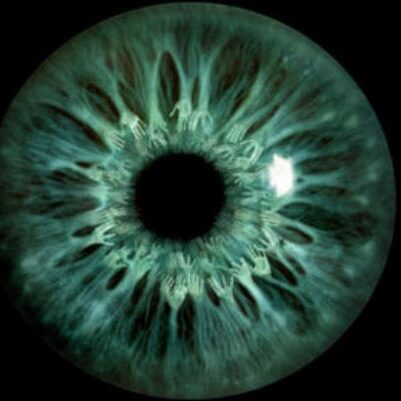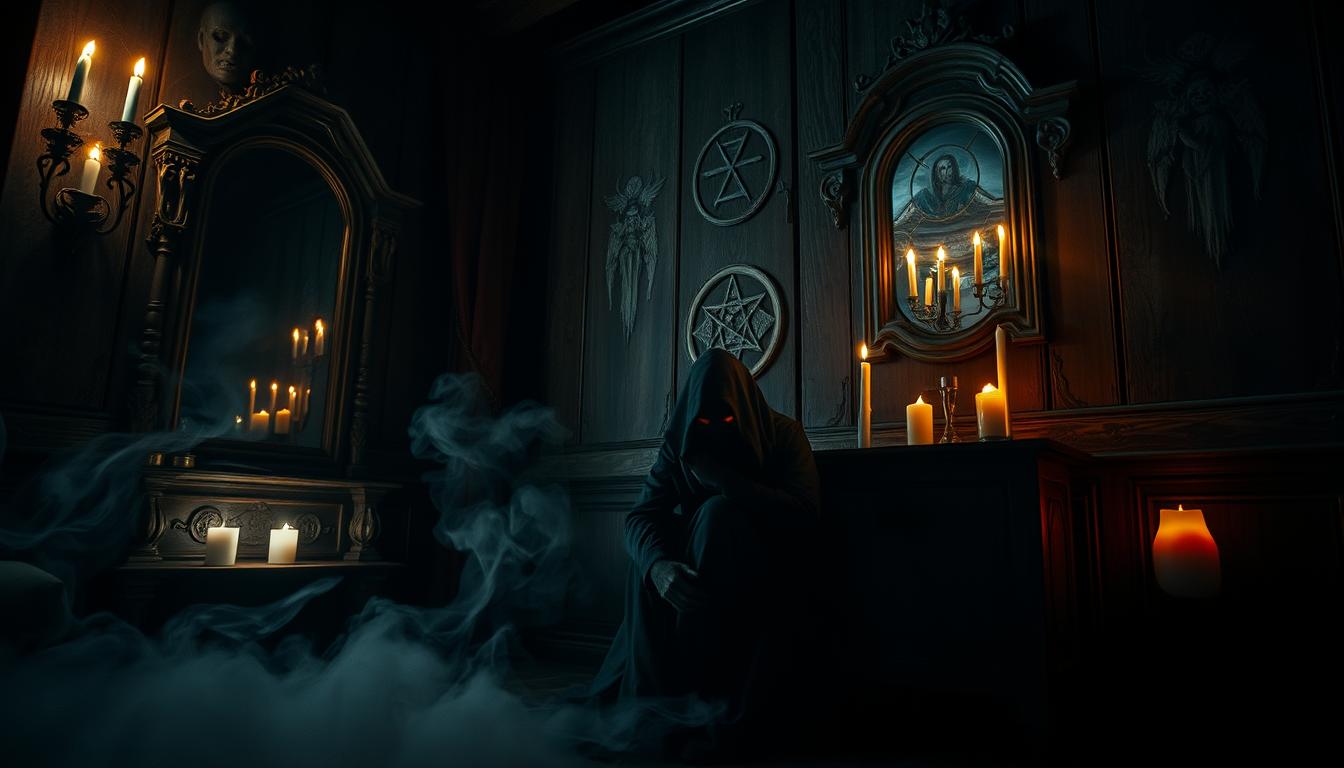Demonic possession is a complex and often misunderstood topic. It has fascinated and scared people for centuries. This article will look at the signs and symptoms to watch for. It will also cover how to assess and address potential cases of demonic possession.
The Latin Church Bishops of the United States Conference of Catholic Bishops approved a document in November 2014. This document, De Exorcismis et Supplicationibus Quibusdam, editio typica, guides the use of exorcism in the Church. While demonic possession is rare, knowing the signs is crucial. It’s important to seek professional and spiritual help when needed.
Key Takeaways
- Demonic possession is a complex phenomenon that can manifest through various physical, psychological, and spiritual signs.
- Awareness of the potential signs of demonic possession is important, as it can help individuals seek the appropriate guidance and support.
- The Catholic Church has provided official guidelines on the use of exorcism, which can be a specialized process for addressing cases of suspected demonic possession.
- While rare, demonic possession is a topic that has been explored throughout history and across different religious and cultural traditions.
- Seeking professional and spiritual guidance is crucial when dealing with suspected cases of demonic possession to ensure proper assessment and appropriate intervention.
Introduction to Demonic Possession
Definition and Background
Demonic possession is a fascinating topic that has caught the attention of many. It’s seen as a state where a person’s body and mind are controlled by spirits or demons. This idea is found in many cultures, including Christianity and Hinduism.
People believe that possession can show us that spiritual forces are real. It can happen by choice or not, and it can change a person’s life in big ways.
For centuries, demonic possession has sparked both wonder and fear. Learning about it helps us understand a mysterious and often debated topic.
“The concept of spirit possession exists in many cultures and religions, including Christianity, Hinduism, and various indigenous traditions.”
Demonic possession is a subject that has been studied for ages. It connects theology, psychology, and the paranormal. Exploring it helps us understand more about ourselves and the world around us.
Scriptural and Historical References
The idea of demonic possession has been around for a long time. Many religious and cultural groups believe in it. In Christianity, the New Testament tells stories of Jesus casting out demons. This shows how the Bible talks about demonic possession.
The Catholic Church has been performing exorcisms for a long time. They have rules for how to do major exorcisms.
Even though there’s not much scriptural or historical proof, many societies believe in demonic possession. Since “The Exorcist” came out in 1973, there’s been more interest in exorcisms. In 2017, Pope Francis told priests to call on exorcists when needed.
The first time Jesus is said to have cast out evil spirits is in the Gospel of Mark, written around A.D. 70. Exorcisms in early modern England were sometimes done by fake exorcists, while Protestant exorcisms in the Renaissance era involved prayer, fasting, and community. The rise of Pentecostalism in the early 1900s led to more exorcisms among American evangelicals. The 1960s-’70s saw Charismatic Christians also performing exorcisms, adding to the interest in the ritual.
“The Sacred Congregation for the Doctrine of the Faith commissioned an expert to prepare a study on Christian Faith and Demonology. The Church condemns forms of superstition, obsessional preoccupation with Satan and demons, and worship of them.”
Some think the Church should rethink its views on Satan and demons. They say the Bible doesn’t clearly say they exist or not. But, the stories of Jesus’ exorcisms and dealings with the devil are key to Christian beliefs and practices.
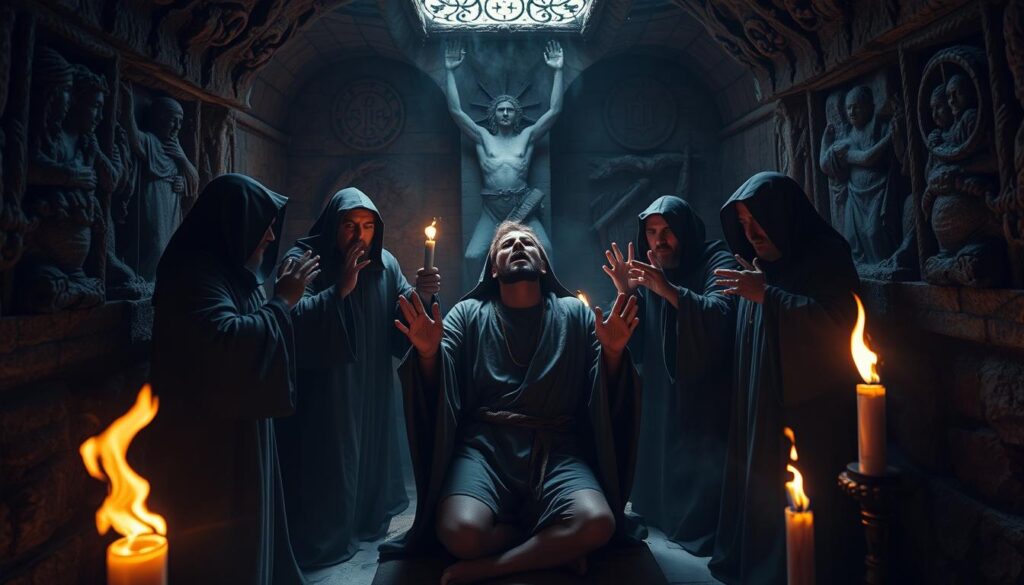
Types of Exorcisms
The Catholic Church has two main types of exorcisms: minor and major. Minor exorcisms are prayers to fight evil and sin. They are often used in rituals like RCIA and Baptism for Children.
Major exorcisms are a special rite. Only a bishop or a priest with special permission can do them. They aim to remove demons or free someone from their grasp.
Minor Exorcisms
Minor exorcisms are common in the Catholic Church. They help fight evil and sin. These prayers are used in big rituals like RCIA and Baptism for Children.
Major Exorcisms
Major exorcisms are for serious cases of demonic possession. Only a bishop or a priest with special permission can perform them. They aim to remove demons or free someone from their influence.
The rules for exorcisms in the Catholic Church have changed over time. The last update was in 1999, the first since 1614. Exorcisms are a last resort, used only after ruling out other illnesses.
“As many as 250 priests from 50 countries attend the Vatican’s annual exorcism course, and the number of priests attending the course has more than doubled since its inception in 2005.”
Exorcism practices are growing, not just in the Catholic Church. Other Christian groups and even in the UK are seeing more of them. A 2017 report by Theos noted this trend. Yet, the exact number of exorcisms in some religions, like the Church of Jesus Christ of Latter-day Saints, is unknown.
Physical Signs and Symptoms
The signs of demonic possession can be different for everyone. They might include not being able to speak, hearing or seeing nothing, or having physical changes. People might also have severe pain, seizures, or be unable to move.
These physical manifestations can happen along with mental or emotional problems. The Bible shows Jesus helped both the body and mind of those suffering.
Symptoms of demonic possession can be quite varied. They might include prophesying, psychosis, changes in mood or personality, and more. Some people are more at risk, like those in their middle years or with poor hygiene.
It’s hard to tell if someone is possessed just by looking at them. The signs can be similar to those of black magic but not as clear. It’s important to recognize these physical signs and symptoms to help those in need.
“During an exorcism, possessed individuals may exhibit behaviors such as speaking in foreign languages, experiencing extreme fear and agitation, promising to stop the exorcism, urinating and defecating in distress, and attempting to harm those around them.”
To avoid possession, staying close to God and keeping a positive attitude helps. Cleanliness and avoiding negative energy are also key. Getting help from true spiritual healers is crucial for dealing with demonic possession.
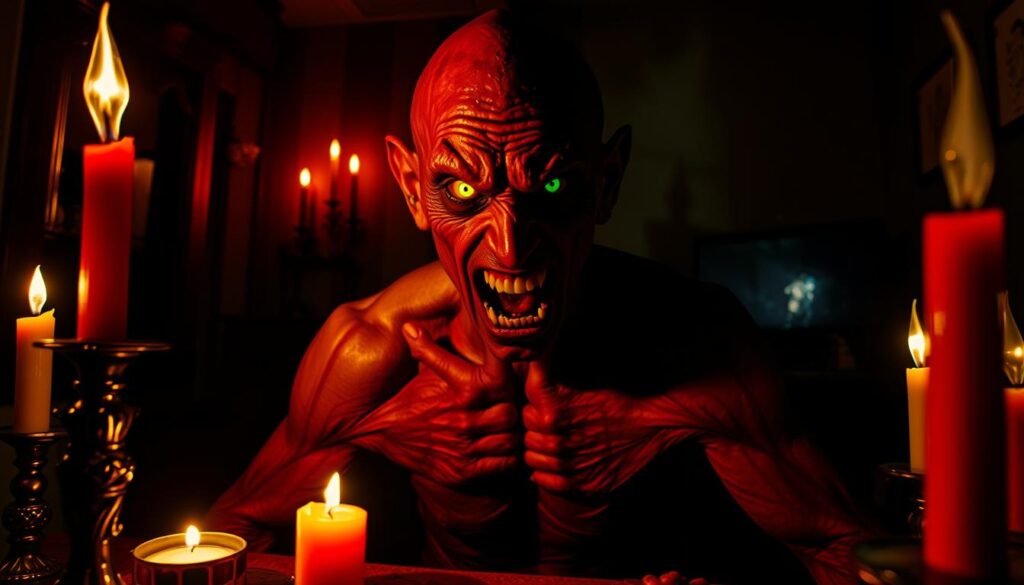
Psychological and Behavioral Indicators
Unusual Behaviors and Mental Disturbances
Some symptoms of demonic possession in the Bible include unprovoked violence and uncontrollable crying out. These actions might be seen as signs of a mental health disorder today. Yet, it’s hard to tell the difference between mental health symptoms and demonic symptoms because they can look similar.
Behavior like living among tombs or being hard to restrain might show spiritual affliction and demonic influence. These behavioral changes can be very disturbing. They affect not just the person but also their family and friends.
“The more severe the spiritual affliction, the more dramatic the behavioral and mental disturbances tend to be.”
It’s key to handle these cases with kindness and a team effort. We should look at both psychological symptoms and the chance of demonic involvement. This way, we can help those facing these big challenges better.
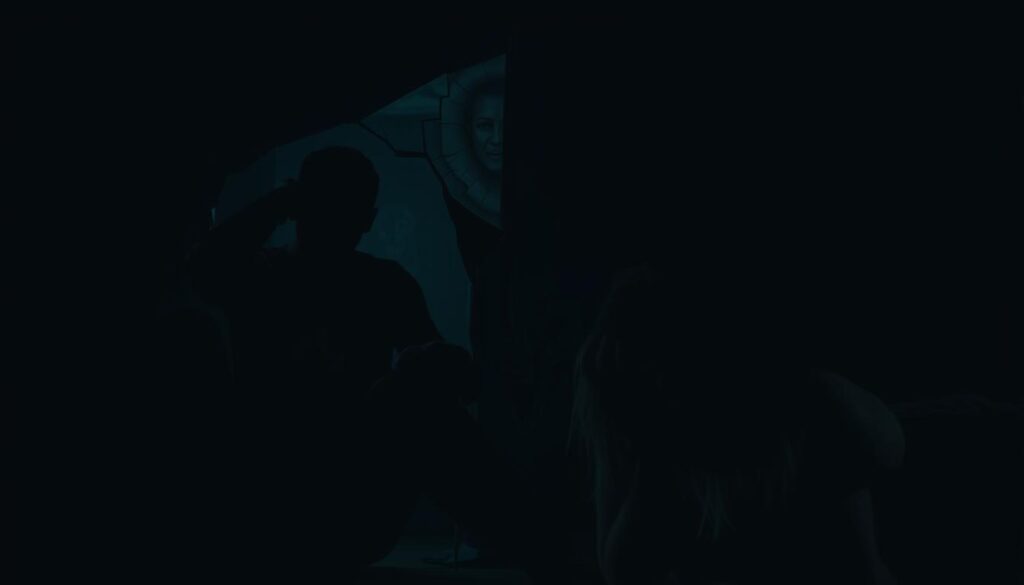
The connection between mental health disorders and spiritual affliction is still being studied. As we delve deeper into this, we must stay open and caring. We need to understand how these issues affect people and their families.
Demonic Possession: Signs and Symptoms to Watch For
Looking for signs and symptoms of demonic possession means watching for many things. These include physical, mental, and behavior changes. While big signs like in movies are rare, small signs of spiritual oppression or supernatural affliction can be there. These might be ongoing health issues, strange mental problems, or relationship troubles that can’t be explained by science or psychology.
To figure out what’s going on, a full check-up is needed. The Church has rules for helping people who think they’re possessed. First, they get medical, mental, and psychiatric tests before seeing an exorcist.
The Rite of Major Exorcism can only be done by a bishop or a priest with special permission. The Church is careful about who gets this help. It follows the Code of Canon Law, which lets Catholics, Catechumens, and even non-Christians get help if they want to be free from evil spirits.
How often exorcisms happen depends on how much they’re needed. The Church is slow to act to avoid making things seem too exciting. Exorcists learn by working with experienced ones. Now, there are also special programs to train them.
“There is a growing belief among health professionals that a patient’s spiritual dimension should be considered in treatment.”
Some doctors, like Dr. Mark Albanese, think spirits can possess people. This includes spirits from different religions. The field is changing, with talks of adding a new mental health diagnosis for trance and possession.
In the end, knowing the signs and symptoms of demonic possession, recognizing supernatural affliction, and potential indicators of spiritual oppression is key. It helps give the right care and support to those facing these issues.
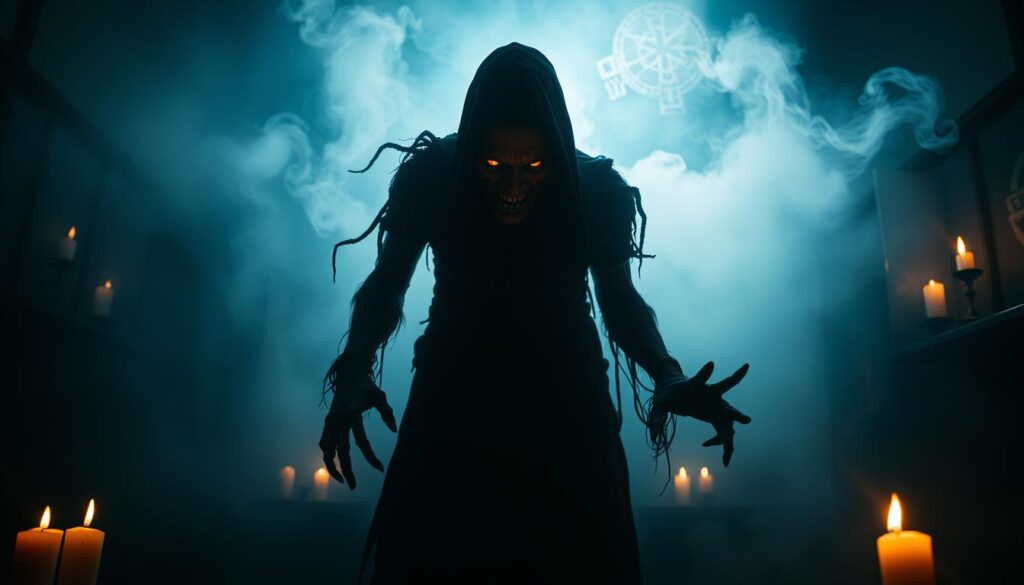
Assessing Demonic Possession
Medical and Psychological Evaluation
When you think about demonic possession, getting a medical and psychological check is key. This step helps figure out if mental health issues or other health problems are causing the symptoms. Experts like doctors, mental health professionals, and those who know about exorcism should do this detailed check.
Possession Trance Disorder (PTD) is a real condition. It changes how you feel and think, like something outside is controlling you. The ICD-11 says PTD is when you feel like you’re in a trance and act differently because of it.
Some symptoms might look like Dissociative Identity Disorder (DID), now called Multiple Personality Disorder. DID makes you feel like you have different identities and forget things. The DSM-5 talks about DID and other disorders that cause similar feelings but don’t fit the full criteria.
It’s important to tell the difference between mental health problems and spiritual issues. Exorcists work with doctors and psychologists to make sure they’re dealing with the right problem. They see exorcism as a way to handle spiritual problems, not mental or physical ones.
“The challenge is to differentiate between mental illness and spiritual issues, especially in cases of auditory hallucinations and paranoid delusions commonly associated with Schizophrenia.”
When checking someone, look at their medical and mental health history. Also, check if they’ve been into New Age stuff, other religions, or the occult. This way, doctors can decide the best way to help, whether it’s for a mental issue, a spiritual problem, or both.
Role of the Church and Exorcists
The Catholic Church is careful when dealing with suspected demonic possession. It has clear rules for handling these cases. The Church wants to make sure it’s really possession, not just a health issue.
At the center of this effort are the exorcists. They are trained to handle this sacred task. They work under the bishop’s guidance, making sure everything is done with care.
The Church is aware of the danger of sensationalism. It wants to help those who are truly suffering. So, anyone claiming possession must first get a medical and psychological check-up.
According to Father Cipriano de Meo, who has been an exorcist since 1952, prayer is key. The Vatican also trains priests and laypeople to tell the difference between possession and illness.
The Catechism of the Catholic Church advises against seeking power from evil. It says a simple, prayerful life is the best defense. Exorcists are reminded that their power comes from Christ, not themselves.
In recent years, the Church has seen more people asking for exorcisms. In 1999, it updated the Rite of Exorcism. Now, only ordained priests with the bishop’s okay can perform solemn exorcisms after a medical check-up. This shows the Church’s dedication to handling possession carefully.
Cultural and Religious Perspectives
Beliefs about demonic possession and exorcism differ across cultures and religions. The Christian tradition has a long history of dealing with possession. Yet, other faiths also recognize evil spirits and the need for spiritual help. It’s key to understand these views to grasp the complex topic of demonic possession.
In some cultures, up to 60% of people with psychosis have delusions tied to religion. Delusions of being possessed affect 20-40% of these patients, more often women. Also, about half of those with dissociative disorders are later diagnosed with schizophrenia.
An Indian study found that 40% of people with schizophrenia were pushed towards magico-religious treatment by their families. This shows how deeply rooted cultural beliefs about the supernatural are in addressing mental health.
| Aspect | Percentage |
|---|---|
| Patients with psychosis reporting delusions with religious content | 20-60% |
| Delusions of possession in psychotic patients | 20-40% |
| Dissociative cases meeting criteria for schizophrenia | 50% |
| Dissociative cases initially diagnosed with psychosis | 27-41% |
| Schizophrenic patients encouraged to accept magico-religious treatment in India | 40% |
The idea of the demonic has faded in today’s culture. This loss hinders our spiritual growth. Yet, revisiting this concept could deepen our understanding of phenomenology of religious life and cross-cultural understanding of supernatural phenomena.
“The experience of the demonic offers a unique window into an important aspect of human experience.”
By exploring the variety of cultural beliefs about demonic possession and religious traditions and exorcism, we can better understand the mysterious world of the supernatural.
Spiritual Warfare and Deliverance
From a Christian view, demonic possession shows the ongoing fight between good and evil. The Church uses deliverance ministry to fight this battle. This includes prayer, fasting, and calling on Jesus’ name. The goal is to free the person spiritually, not just physically or mentally.
The New Testament shows Jesus battling evil spirits fifty-five times. Only five times are the details given. Exorcism is done by both believers and non-believers. But deliverance ministry focuses on spiritual battles and is for believers.
Diagnosis in deliverance ministries looks at the person’s life and history. It checks their relationships and objects linked to demonic activity. Naming the demon gives the person casting it out power over it.
Expelling demons involves reading Biblical verses and praying. It also includes using “the blood of Jesus,” touching the person, and anointing with oil or water. After the expulsion, prayers are said to keep demons away.
“Demons are believed to run in families due to ancestral connections to Satanism, Freemasonry, witchcraft, or unrepented sins, leading to negative traits, family curses, physical ailments, and addictive behaviors.”
Controversies and Skepticism
Many people believe in demonic possession in different cultures and religions. But, scientists and doctors are still unsure. They think some cases might be caused by mental health issues or other natural reasons, not demons.
Popular media often shows possession in a dramatic way. This makes people more skeptical. Experts say we need to look at all possible reasons before blaming demons.
Those who believe in possession say it’s a spiritual issue. They point to the Bible and history. They also say we should look at all angles when dealing with it.
The debate shows we need to talk more and work together. We should look at all sides of this complex issue.
“The Church teaches that demons do exist. Satan led about a third of the angels in revolt against God and was the most gifted angel.”
We must be understanding and wise in this debate. We should listen to everyone’s views, whether they see it spiritually, medically, or scientifically.
Conclusion
Demonic possession is a complex topic that has puzzled people for centuries. It has been discussed in scriptures and history. The signs and symptoms of possession are also well-documented.
If you’re worried about demonic influence in your life or someone else’s, be cautious. Seek help from experts in both medicine and religion. They can figure out what’s going on and suggest the best ways to help.
Understanding demonic possession can help you approach it with care and kindness. Most spiritual issues aren’t caused by demons. They can often be solved with medical, psychological, and spiritual support. The main goal is to help people connect with God and overcome evil influences.
FAQ
What is the definition of demonic possession?
Demonic possession is when a person’s body and mind are controlled by evil spirits. This idea is found in many cultures and religions, like Christianity and Hinduism. It’s believed that spirits, ghosts, demons, angels, or gods can take over a human body.
What are the physical signs and symptoms associated with demonic possession?
Signs of demonic possession can be quite varied. They might include being unable to speak, hearing nothing, seeing nothing, or having severe pain. People might also have seizures or become paralyzed. These symptoms can affect both the body and the mind.
What are the psychological and behavioral indicators of demonic possession?
The Bible talks about signs like sudden violence, uncontrollable crying, and being troubled. These actions might seem like they could be from a mental illness today. But, the line between mental health issues and demonic possession can be very thin.
How does the Catholic Church address cases of suspected demonic possession?
The Catholic Church has clear steps for dealing with suspected demonic possession. They appoint trained exorcists who are pious, knowledgeable, and wise. These exorcists work under the bishop’s guidance, taking a careful and balanced approach to each case.
What is the difference between minor and major exorcisms?
Minor exorcisms are prayers to help people overcome evil and sin. They’re used in the RCIA and Rite of Baptism for Children. Major exorcisms, however, are a special rite to remove demons from a person. Only a bishop or a priest with special permission can perform these.
What are the cultural and religious perspectives on demonic possession?
Views on demonic possession and exorcism vary across cultures and religions. Christianity has a long history of dealing with possession. Yet, other faiths also recognize evil spirits and the need for spiritual help.
What is the role of spiritual warfare and deliverance ministry in addressing demonic possession?
From a Christian viewpoint, demonic possession is part of a spiritual battle. The Church uses spiritual warfare and deliverance ministry to help. This includes prayer, fasting, and using Jesus’ name. The goal is to free the person spiritually, not just physically or mentally.
What are the controversies and skepticism surrounding demonic possession?
Belief in demonic possession is widespread, but it’s also debated. Some think it’s better explained by mental health or natural causes. The way possession is shown in movies has also made people skeptical. There’s a need for a deeper understanding of the topic.
Source Links
- Exorcism: Facts and Fiction About Demonic Possession – https://www.livescience.com/27727-exorcism-facts-and-fiction.html
- What does the Bible say about demon possession / demonic possession? – https://www.gotquestions.org/demon-possession.html
- Q&A: Are demonic possessions just mental illness? – Biweekly Newspaper for the Diocese of Richmond % – https://catholicvirginian.org/columns/qa-are-demonic-possessions-just-mental-illness/
- Signs of possession – https://www.oursundayvisitor.com/signs-of-possession/
- Exorcisms: The Centuries‑Long History of Expelling Evil | HISTORY – https://www.history.com/news/exorcisms-christianity-gospels-movie
- Christian Faith and Demonology – https://www.vatican.va/roman_curia/congregations/cfaith/documents/rc_con_cfaith_doc_19750626_fede-cristiana-demonologia_en.html
- Reasons for Possession: Perilous People, Hazardous Places – https://academic.oup.com/book/40508/chapter/347818224
- Exorcism – https://en.wikipedia.org/wiki/Exorcism
- PDF – https://www.ncbi.nlm.nih.gov/pmc/articles/PMC2495148/pdf/jmedeth00319-0026.pdf
- Exorcism: Vatican course opens doors to 250 priests – https://www.bbc.com/news/world-europe-43697573
- The Top 10 Major Signs of Demonic Possession – https://www.linkedin.com/pulse/top-10-major-signs-demonic-possession-spiritual-healer-talal-hupgc
- Brian Levack on Possession and Exorcism – Not Even Past – https://notevenpast.org/brian-levack-possession-and-exorcism/
- Assessment and Diagnosis of Demonic Influence – Chapter 9 of "Counseling and the Demonic" – https://digitalcommons.georgefox.edu/cgi/viewcontent.cgi?article=1012&context=counselingandthedemonic
- Diagnosing the Demonic – https://digitalcommons.liberty.edu/context/ccfs_fac_pubs/article/1068/viewcontent/DiagnosingtheDemonic.pdf
- The Phenomenon of Demonic Possession: Definition, Contexts and Multidisciplinary Approaches | Auctores – https://www.auctoresonline.org/article/the-phenomenon-of-demonic-possession3A-definition2C-contexts-and-multidisciplinary-approaches
- Exorcism – https://www.usccb.org/prayer-and-worship/sacraments-and-sacramentals/sacramentals-blessings/exorcism
- When exorcists need help, they call him | CNN – https://www.cnn.com/2017/08/04/health/exorcism-doctor/index.html
- Trapped Between Theological and Medical Notions of Possession: A Case of Possession Trance Disorder With a 3-Year Follow-Up – https://www.ncbi.nlm.nih.gov/pmc/articles/PMC9199574/
- Exorcism: When Is It Appropriate? – https://www.mentalhelp.net/blogs/exorcism-when-is-it-appropriate/
- Unusual association of diseases/symptoms: Practicing exorcism in schizophrenia – https://www.ncbi.nlm.nih.gov/pmc/articles/PMC3062860/
- How can you tell if someone is demon-possessed? – https://www.catholicnewsagency.com/news/33586/how-can-you-tell-if-someone-is-demon-possessed
- Exorcism in the Catholic Church – https://en.wikipedia.org/wiki/Exorcism_in_the_Catholic_Church
- Frontiers | Delusions of Possession and Religious Coping in Schizophrenia: A Qualitative Study of Four Cases – https://www.frontiersin.org/journals/psychology/articles/10.3389/fpsyg.2021.628925/full
- PDF – https://www.degruyter.com/document/doi/10.1515/opth-2018-0041/pdf
- Deliverance ministry – https://en.wikipedia.org/wiki/Deliverance_ministry
- Spiritual Warfare, Possession and Exorcism – https://markblord.wordpress.com/spiritual-warfare-possession-and-exorcism/
- OPEN DOORS TO CURSES AND DEMONIC INTRUSION – Awesome Church – https://www.awesomechurch.com/open-doors-to-curses-and-demonic-intrusion/
- Demons Don’t Sleep: Interview with a Demonologist – https://www.catholic.com/magazine/print-edition/demons-dont-sleep-interview-with-a-demonologist
- Know Your Enemy Pt 2: What Do Demons Do? | Mercy Hill Church – https://mercyhillchurch.com/know-your-enemy-pt-2-what-do-demons-do/
- In the Presence of Evil: Demonic Perception Narratives – https://digitalcommons.usu.edu/cgi/viewcontent.cgi?article=2594&context=gradreports
- PDF – https://www.pharosjot.com/uploads/7/1/6/3/7163688/article_33_vol_103_2__2022_stellenbosch.pdf
- PDF – https://www.rcpsych.ac.uk/docs/default-source/members/sigs/spirituality-spsig/spirituality-special-interest-group-publications-beatrice-brandon-symptoms-of-spiritual-crisis.pdf?sfvrsn=2f12d0bb_2
